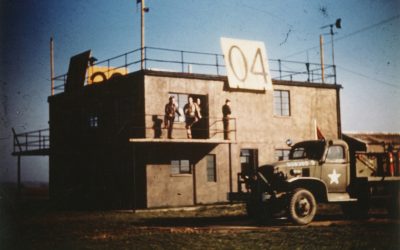Airfield
‘ Landscape history of Hadstock Parish 1777-2020, Part 5: Notable Buildings’, by Richard Dolby and Pat Croxton-Smith
This is a further addition to the series of illustrated online publications dealing with the landscape history of Hadstock Parish. Part 5 presents images and explanatory text on notable buildings, including St Botolph’s church, the former village school, listed houses, shops, large barns, pubs, mills and WW2 airfield structures.
Aerial views of USAAF Station 165, 1944-1946
These images are courtesy of the American Air Museum in Britain, part of the Imperial War Museums, (www.americanairmuseum.com)
USAAF Station 165 Layout, 1944
This illustration was created by Richard Dolby from drawings held by the Imperial War Museum and shows the locations of the airfield’s main facilities in 1944.
Little Walden Control Tower, 1944
The Control Tower was the focal point of the USAAF Station 165. Pilots and ground staff would come together at the Tower and watch anxiously as their friends left and returned from dangerous bomber and fighter missions into occupied France. Sadly, not all the aircraft that left the airfield would return.
The airfield and its American military community had a significant impact on life in Hadstock, and brought the local residents closer to the daily conflict of the war. Today, The Control Tower is a private home, and the owners are collating as much information as they can about the wartime history of the airfield. Visit their website here to see the photos, artefacts and other information they have gathered so far.
‘The Yanks are coming!’ Memories of Susan Mackay and Roy Swann
Extracted from Susan Mackay and Roy Swann’s book “To stand and stare” which describes life in Hadstock in the middle twentieth century, this article is a lovely insight into Hadstock life during the building and operation of United States Army Airforce (USAAF) Station 165 between 1942 and 1946.


